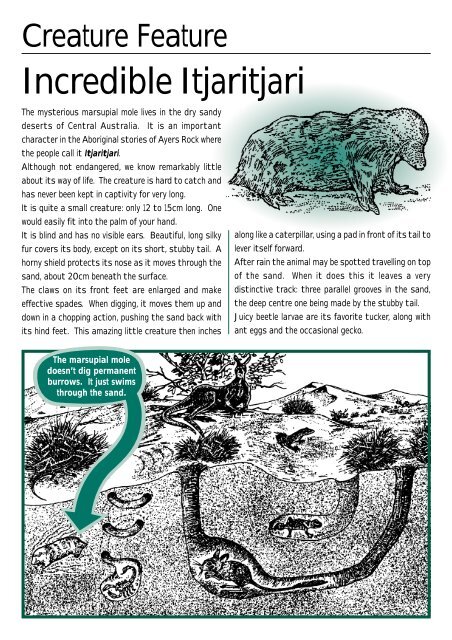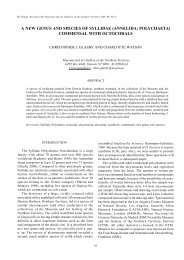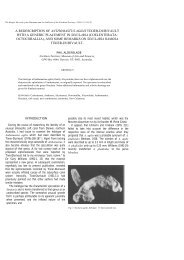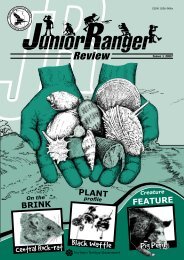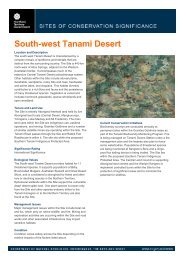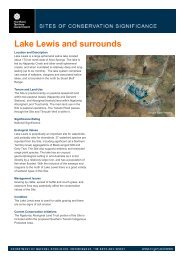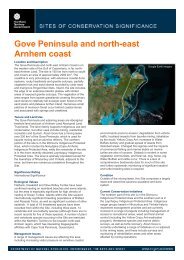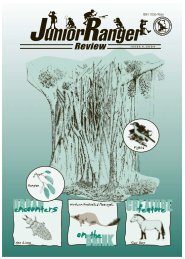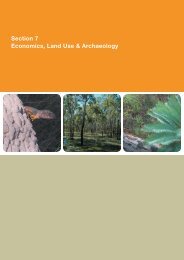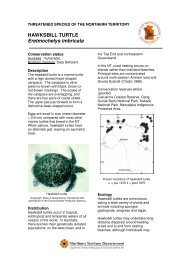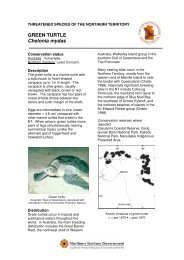Backyard Wildlife
Backyard Wildlife
Backyard Wildlife
You also want an ePaper? Increase the reach of your titles
YUMPU automatically turns print PDFs into web optimized ePapers that Google loves.
Creature Feature<br />
Incredible Itjaritjari<br />
The mysterious marsupial mole lives in the dry sandy<br />
deserts of Central Australia. It is an important<br />
character in the Aboriginal stories of Ayers Rock where<br />
the people call it Itjaritjari.<br />
Although not endangered, we know remarkably little<br />
about its way of life. The creature is hard to catch and<br />
has never been kept in captivity for very long.<br />
It is quite a small creature: only 12 to 15cm long. One<br />
would easily fit into the palm of your hand.<br />
It is blind and has no visible ears. Beautiful, long silky<br />
fur covers its body, except on its short, stubby tail. A<br />
horny shield protects its nose as it moves through the<br />
sand, about 20cm beneath the surface.<br />
The claws on its front feet are enlarged and make<br />
effective spades. When digging, it moves them up and<br />
down in a chopping action, pushing the sand back with<br />
its hind feet. This amazing little creature then inches<br />
The marsupial mole<br />
doesn’t dig permanent<br />
burrows. It just swims<br />
through the sand.<br />
along like a caterpillar, using a pad in front of its tail to<br />
lever itself forward.<br />
After rain the animal may be spotted travelling on top<br />
of the sand. When it does this it leaves a very<br />
distinctive track: three parallel grooves in the sand,<br />
the deep centre one being made by the stubby tail.<br />
Juicy beetle larvae are its favorite tucker, along with<br />
ant eggs and the occasional gecko.


